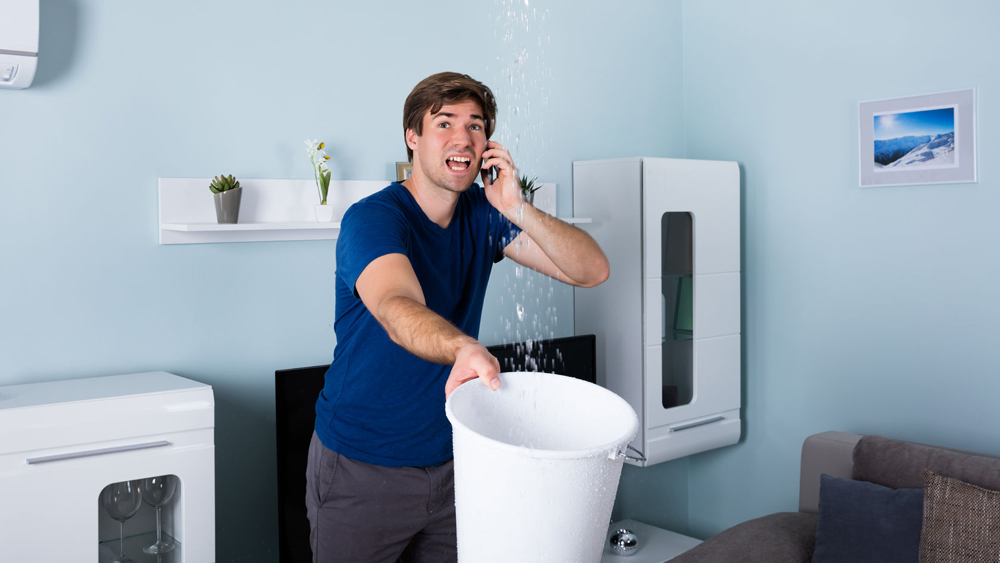Your House's Primary Frequent Leak Triggers: Analysis
Your House's Primary Frequent Leak Triggers: Analysis
Blog Article
Listed here below you will discover a good deal of first-rate insight on the subject of How to detect water leaks in your home.

Leaks not only cause waste of water yet can additionally create unneeded damages to your residence and also advertise undesirable natural development. Water leaks could go unnoticed considering that many of the pipework in our residence is concealed. By looking and also recognizing for everyday situations that cause leaks, you can secure your house from future leakages and unnecessary damages. Today, we will look at 6 leakage creates that might be creating your pipelines to trickle.
Intruding roots
Most water leakages start outside your home rather than inside it. If you discover an abrupt decrease in water stress, say in your faucet, require time to head out as well as analyze your lawn. You could observe wet spots or sinkholes in your yard, and that might suggest that tree roots are getting into water lines creating water to leak out. You can have your plumber look for invasion, especially if you have trees or bushes near your residential property.
Corroded water supply
This might be the cause of discoloration or bending on your water pipelines. If our plumbing system is old, consider changing the pipelines because they are at a greater danger of corrosion than the more recent versions.
Faulty Pipeline Joints
Pipe joints can weaken over time, resulting in water leaks. If you have loud pipelines that make ticking or banging sounds, especially when the warm water is transformed on, your pipeline joints are probably under a whole lot of pressure.
Immediate temperature changes.
Severe temperature level changes in our pipes can cause them to expand and also get suddenly. This growth and contraction might create cracks in the pipelines, especially if the temperature are listed below freezing.
Poor Water Connectors
At times, a leakage can be brought on by loosened hoses as well as pipes that provide your devices. Usually, moving is what creates the loose water Connections. You could discover when it comes to a cleaning device, a pipe might spring a leakage due to drinking throughout the spin cycle. In case of a water links leakage, you might discover water running straight from the supply line or puddles around your devices.
Clogged Drains
Blocked drains may be annoying and inconveniencing, however they can sometimes end up triggering an overflow leading to rupture pipelines. Keep getting rid of any type of products that may decrease your drains pipes that could block them to stay clear of such inconveniences.
All the above are sources of leaks but not all water leaks arise from plumbing leakages; some leaks may originate from roof leaks. All leaks ought to be repaired immediately to prevent water damage.
Leaks not just create waste of water but can also cause unnecessary damages to your residence and also promote undesirable organic growth. By looking and also understanding for everyday situations that trigger leaks, you can shield your residence from future leaks as well as unnecessary damage. Today, we will certainly look at 6 leakage creates that might be triggering your pipelines to drip.
At times, a leak can be caused by loosened hoses and also pipes that supply your devices. In instance of a water connections leakage, you may notice water running directly from the supply line or pools around your appliances.
How To Check For Water Leak In Your Home
How To Check for Leaks
The average household's leaks can account for nearly 10,000 gallons of water wasted every year and ten percent of homes have leaks that waste 90 gallons or more per day. Common types of leaks found in the home are worn toilet flappers, dripping faucets, and other leaking valves. These types of leaks are often easy to fix, requiring only a few tools and hardware that can pay for themselves in water savings. Fixing easily corrected household water leaks can save homeowners about 10 percent on their water bills.
To check for leaks in your home, you first need to determine whether you're wasting water and then identify the source of the leak. Here are some tips for finding leaks:
Take a look at your water usage during a colder month, such as January or February. If a family of four exceeds 12,000 gallons per month, there are serious leaks.
Check your water meter before and after a two-hour period when no water is being used. If the meter changes at all, you probably have a leak.
Identify toilet leaks by placing a drop of food coloring in the toilet tank. If any color shows up in the bowl after 10 minutes, you have a leak. (Be sure to flush immediately after the experiment to avoid staining the tank.)
Examine faucet gaskets and pipe fittings for any water on the outside of the pipe to check for surface leaks.
Undetected water leaks can happen without the home or business owner even realizing. If you suspect a water leak, but not able to find the source. It is time to contact a professional water leak detection service, The Leak Doctor.
How To Find a Water Leak In Your Home
https://www.leakdoctor.com/blog/How-To-Check-For-Water-Leak-In-Your-Home_AE197.html

We hope you liked our post about How to detect water leaks in your home. Thanks so much for taking the time to read through our blog post. Be sure to set aside a second to promote this entry if you liked it. We thank you for reading our article about How to Find Water Leaks.
Burst? Reach us! Report this page